Why I’m Taking Raw Organic Spirulina Powder Daily
Raw Spirulina: the Superfood Everyone Raves About
Spirulina is an algae and cyanobacteria (prebiotic) which is great for the digestive system and can increase the growth of other prebiotics in your gut. Spirulina happens to be one of the top superfoods in the world today because of its unique nutrition profile. Loaded with chlorophyll (which alkalises the body), loaded with B vitamins, vitamin K, minerals (zinc, magnesium) and one of the highest plant based sources of protein.
The above sounds good. But it wasn’t until this week that I learned about spirulina incredible health benefits. Not all trusted websites have given me great info about it though, there’s been downsides to spirulina as well. Below I go through my research journey.
If you’ve been bombarded with spirulina-this and spirulina-that and finally got curious about it, this is the article for you. Come on board and make up your own mind from the below information.
Spirulina Had me at ‘Hello’
A few weeks ago my auntie told me she was taking spirulina and chorella on a daily basis. My auntie has always been incredibly health-conscious. She was the first person to teach me how to make really interesting healthy salads, which I still make to the day. This was over 20 years ago.
So, when she mentioned how important spirulina and chlorella were in her DAILY diet, I was all ears.
I knew I was going to take both spiralling and chrolella because of the way she spoke about them. I had no idea about their benefits but it was all down to research and ‘when’ would I get started and ‘how often’ would I take them. But I trusted her judgement and if she was taking them, I was going to take them. So, yes, spirulina and chlorella simply had me at ‘hello’.
A few days after I had my chat with my auntie I headed towards the health shop and bought both packages. I’ve decided to publish two separate entries on ohmightyhealth for each of the algae (yes, they’re algae, or, rather, micro-algae) which allows me to cover each a little in-depth and hopefully go beyond the hype so I can make an informed decision in terms of taking both.
This entry will be about spirulina.
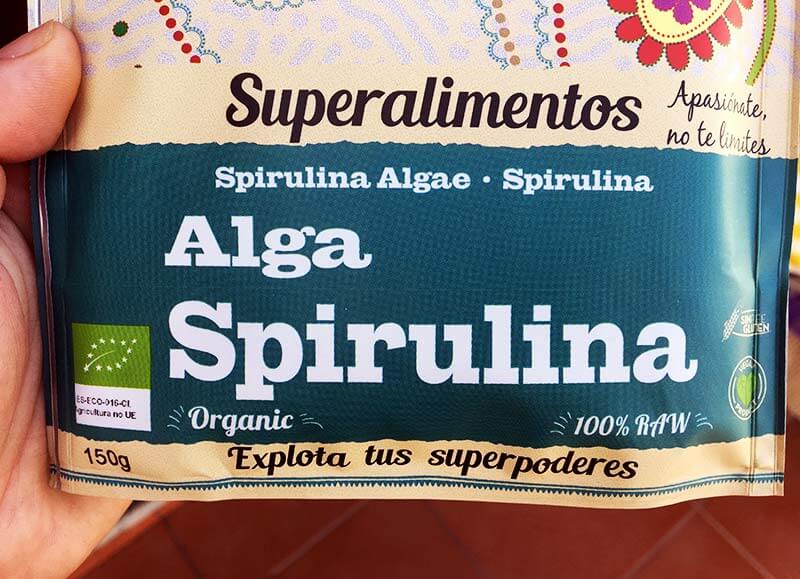
Spirulina Blue Green Algae
Two things stood out as soon as I started my research: spirulina being a blue-green algae (I want to know more about this) and a superfood (I’m ashamed – I don’t truly know what a superfood really is so I need to research this as well. I said I was ashamed). Dr. Axe covers it in this article:
Blue-green algae is a freshwater plant that is now one of the most researched, and alongside its cousin chlorella, most talked about superfoods today.
The next stop is to cover the word ‘superfood’. Surely I understand that it means it’s a Superman of foods, but I need to know what it is EXACTLY.
[Superfoods] are foods that are jam-packed with nutrients and can help provide your body with the vitamins and minerals you need to thrive, survive and feel great.
Source
Yep, that’s what I thought but I need to read it somewhere.
Ok, so far I’m liking the sound of this, so we’re starting on a good foot. By the way, if you’d like to know the entire superfood-food list please check this article. I’ll mention the foods in here just so I have them at hand, but the article I linked to will give you insights on each of them. Wheatgrass, cinnamon, blueberries, avocados, broccoli rabe, salmon, sweet potatoes, goji berries, raw milk, almonds, kale, spirulina, acai berries, coconuts, flaxseeds. Good to have in here in case I need to have a quick peek!
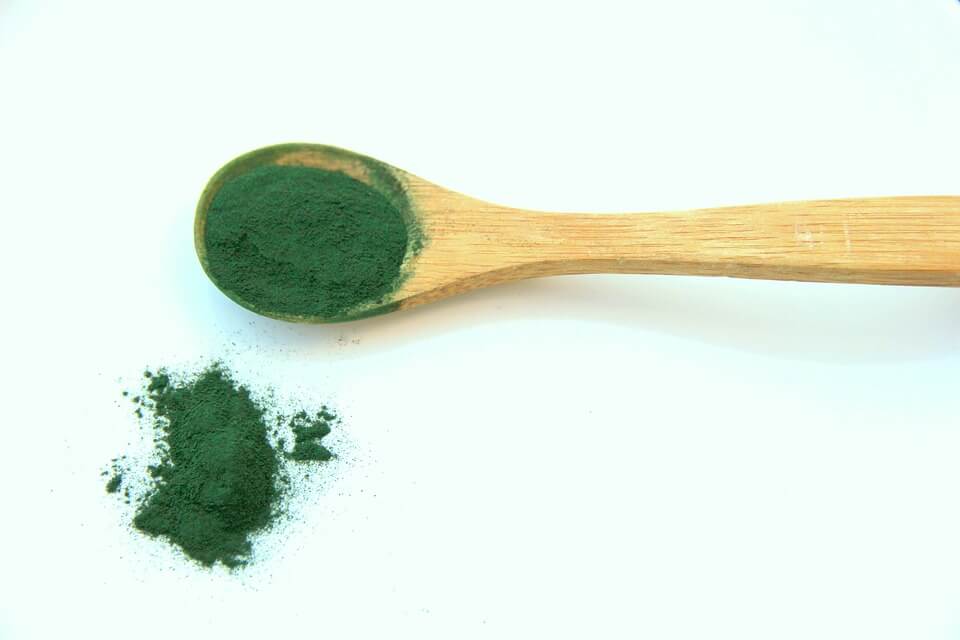
A Simple, Plant-Like Organism
One of the first things that caught my attention regarding spirulina being an algae is the fact that algae survive in a completely different environment so we’re talking here about another type of organism altogether.
“Blue-green algae” describes a large and diverse group of simple, plant-like organisms found in salt water and some large fresh water lakes.
Source
I like the idea of ‘simple, plant-like organisms’ because it somehow feels right to connect with the simplicity of an organism which is probably still in its primitive form but somehow has managed to survive through billennia.
It’s a wonderful natural, single cell micro-algae that has existed on our planet for billions of years.
Source
It makes me feel like I’m travelling back in time, finding very basic nutritional sources which my body probably will recognise within its own very basic organic makeup. In fact, according to the ‘Harvard Women’s Health Watch’ (November 2006):
Spirulina can grow in extreme conditions inhospitable to most other water-dwelling organisms.
Source
‘Can grow in extreme conditions inhospitable’. This little quasi-plant must be very, very strong (and stubborn) to survive in such simple conditions. Check out the quote below, I find it fascinating:
Algae are in fact a fascinating group of microorganisms, which use the simple components of sunlight, carbon dioxide and mineral water to robustly sustain life and reproduce at incredible rates. They are in essence, nutritionally complete microcosms of the energy systems that support us all- a blueprint for life as we understand it to be.
Source
Yes, fascinating indeed. To survive in such conditions is astonishing and the fact that they are ‘nutritionally complete microcosms that support us all’ is brutally beautiful in my honest opinion.
I’m impressed with the mysterious simplicity of this basic organism. What else can we learn about blue-green algae?
Blue-green algae are used as a source of dietary protein, B-vitamins, and iron. They are also used for weight loss, attention deficit-hyperactivity disorder (ADHD), hayfever, diabetes, stress, fatigue, anxiety, depression, and premenstrual syndrome (PMS) and other women’s health issues.
Source
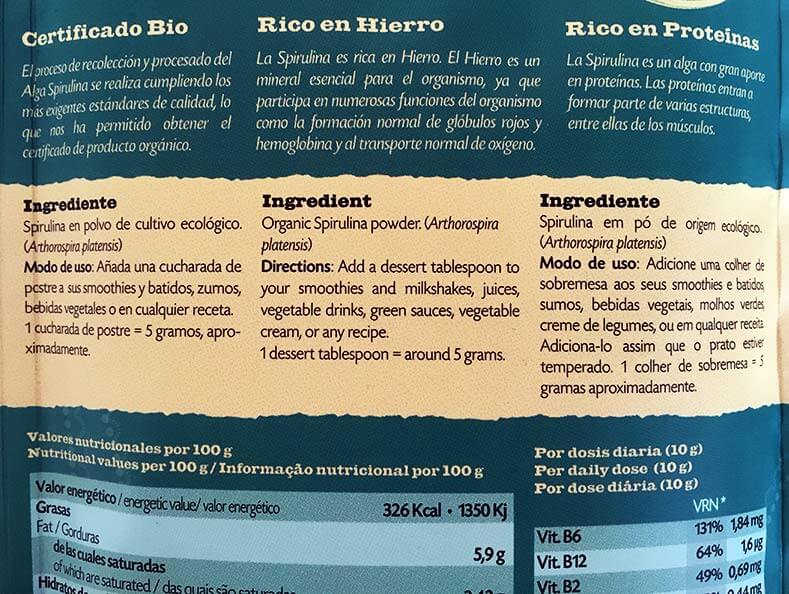
Touted as a source of protein, B vitamins and iron, this lesser-known superfood is rumored do everything from boost your immunity levels to reduce your anxiety.
Source
B-vitamin and iron are important to me because of hormonal issues with menopause. Weight loss is a plus, I could do with losing some weight. I wonder if it would help with my menopuase in more ways besides the beneficial B-vitamin and iron (I already take sage tea for hot flashes, so I’m not worried about that) . But can take all of these things separately, why add yet another plant into my diet?
After doing some research, Gannoe, an exercise physiologist, decided to give spirulina a try. She’d been a vegetarian for about two and a half years — and was always searching for new plant-based ways to get all the protein and vitamins she needs.
Source
As someone who doesn’t eat out-of-water meat (I eat fish, seafood, etc) I need sources to get all the protein and vitamins I need.
“It also contains gamma-linolenic acid (GLA), an omega-6 fatty acid.”
Source
I know from making natural skincare that very few of the oils I use are high on GLA (blackcurrant, borage, evening primrose oils). GLA is a precious omega fatty acid so this is interesting for me.
There has been some promising research, which indicates that spirulina may help with nasal allergies. In recent years, Zanini says that there has been increasing interest in spirulina as an energy booster, too.
Source
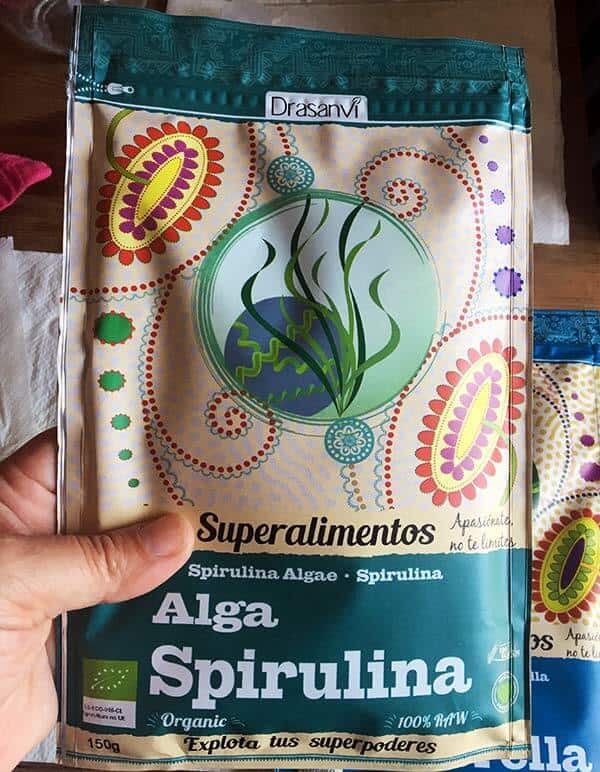
Now, wait a minute. Nasal allergies? I’ve always had problems with my breathing, it gets worse with certain herbs like parsley (cooked parsley, not fresh). At night my nose always feels congested but in general it’s never too bad for me to justify taking tablets. This is very good news! And, it gets better:
“I take algae primarily for the energy boost.”
Source
For nasal allergies and as an energy booster. Those two are very appealing to me.
[…] spirulina is rich in protein, vitamins, minerals, carotenoids and antioxidants. It also has B vitamins, beta carotene, vitamin E, manganese, zinc, copper, iron, selenium and gamma linoleic acid. Whew – pretty decent list of goodies from an algae!
Source
One of my favourite quotes here as you can see what spirulina can provide at a glance.
I’m not 100% convinced. I need to go: OMG, I really want to take this daily! I need some more oomph to get there. Here’s some more information from Axe:
This blue-green algae is considered one of the most nutritious ultimate superfoods on the planet. Gram for gram, it’s higher in protein than red meat, contains all of the essential fatty acids your body needs, and also provides tons of antioxidants, vitamins and minerals.
Source
Higher in protein than red meat? Contains all EFAs (essential fatty acids)? Ooh, I like the sound of that! One of the most nutritious ultimate superfoods ON THE PLANET?? This is more like it… These numbers on his website are incredibly exciting as well [source]:
- 2800% more beta-carotene than carrots
- 3900% more iron than spinach
- 600% more protein than tofu
- 280% more antioxidants than blueberries
This is too good to be true, now I’m checking WebMD for spirulina uses. Out of the 27 uses it gives (all under ‘insufficient evidence for’, by the way,), I’m very happy with the following:
Diabetes. An early study shows that people with type 2 diabetes who take 1 gram of a blue-green algae product […] by mouth twice daily for 2 mouths have lower blood sugar levels. […] High cholesterol. Early research shows that blue-green algae lowers cholesterol in people with normal or slightly elevated cholesterol levels.[…] High blood pressure. Early research shows that taking 4.5 grams per day of blue-green algae by mouth for 6 weeks reduces blood pressure in some people with high blood pressure. […] Menopausal symptoms. An early study shows that taking 1.6 grams per day of a blue-green algae product by mouth daily for 8 weeks lowers anxiety and depression in women going through menopause. Obesity. […] One early study shows that taking a specific blue-green algae product […] at a dose of 1 gram taken two or four times per day by mouth for 3 months slightly improve weight loss in overweight adults. As a source of dietary protein, B-vitamins, and iron.
**Check the entire list here.
Similar to what Axe mentioned but adding diabetes, high cholesterol and high blood pressure to the mix. Nice. By now I’m quite convinced. Let’s finish it off with why Axe himself takes spirulina daily.
Dr. Axe Takes Spirulina Every Single Day & Tells Us About it:
Grown in Africa, Mexico, Hawaii. Spirulina is an algae and cyanobacteria (prebiotic) which is great for the digestive system and can increase the growth of other prebiotics in your gut. Spirulina happens to be one of the top superfoods in the world today because of its unique nutrition profile. Loaded with chlorophyll (which alkalises the body), loaded with B vitamins, vitamin K, minerals (zinc, magnesium) and one of the highest plant based sources of protein.
And there’s more:
- Detoxifies your body from the heavy metal arsenic, which we get a lot in our diet because of pesticides (which would cause liver failure, kidney degeneration, neurological issues like dementia, and other brain/neurological issues)
- Protects your body against radiation poisoning (microwaves, cellphones, etc) and help detoxify your body (one of the reasons Dr. Axe takes it every single day)
- Shown to help fight cancer
- A nutritional powerhouse (lowers cholesterol, fights diabetes, balance blood pressure levels, the ones mentioned above from WebMD)
- Boosts your energy levels (add a scoop to a superfood smoothie for breakfast)
In terms of the bulleted points, I’m surely filled with pesticide poisoning from the fruits and vegs I’ve been eating throughout my entire life and could DEFINITELY DO with some detoxifying in this department. Same regarding cellphones, microwaves, etc – who doesn’t need detoxifying from the radiation poisoning from these gadgets in the modern world? The fact that spirulina is a nutritional powerhouse also convinces me and I could do with boosting my energy levels for sure (by 2pm I’m usually quite tired. In fact, I’ve noticed in the last year or so my energy has decreased quite a lot and I’m blaming it on my menopause so I most definitely have to give this a go!).
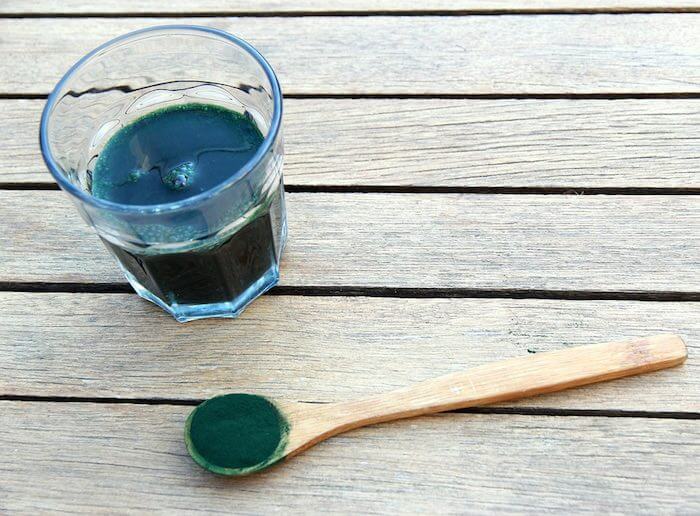
Spirulina CONS
Now let’s have a look at the CONS.
…you’d have to ingest a lot of spirulina to really add a significant amount of protein to your diet. Other sources of protein, like nuts, legumes and whole grains, have more protein in smaller quantities of food — and for less money.
Source
I have a feeling that if I concentrate on a good vegetarian diet I’ll be able to replace what spirulina does (am new-ish to ‘eating well’ so I’m can’t rely on my good will alone. Spirulina could act as a ‘bridge’ to get there).
Then there’s the B12 controversy:
“The B12 in algae isn’t really absorbable by the body,” says Rumsey. If you don’t eat meat, both Rumsey and Zanini advise that you turn to other sources of B vitamins for dietary protein and iron, such as beans, lentils, nutritional yeast and eggs or dairy.
Source
I do eat quite a lot of lentils in my diet (I’m not sure about the amount of B12 lentils have, if any, I need to check this out). Here’s what Keryllyoga.com says about this topic (very interesting):
Spirulina was also heavily promoted in the past as a reliable plant based source of vitamin B12 (Cobalamin). Although the body needs very little B12 (between 2.4 – 3 mcg/day), it is required to form DNA, make healthy blood cells and maintain proper nerve function […] The hype does not tell you that spirulina, despite all its other benefits contains inactive B12 analogues that may even have the ability to interfere with B12 absorption. […] This then ‘fools’ the body into thinking that it is the real deal so the body mistakenly absorbs it but receives no subsequent benefit. This was published in the American Journal of Clinical Nutrition in 1988 (see reference below) but was somehow missed(?) by the spirulina distributors of the time.
Source
You can research this further and Kerill article is truly fantastic, I encourage you to go and read it to learn more about spirulina and B12.
Spirulina is also a source of vitamin B12, but it seems that its bioavailability is questioned. So, to assure an optimal vitamin B12 intake, it’s recommended to consume chlorella, as it is well assimilated and more adapted to a vegetarian diet.
Source
Just thought I’d quote other sources on the B12 controversy.
[Other vegans] proposed specific foods, including spirulina, nori, tempeh, and barley grass, as suitable non-animal sources of B12. Such claims have not stood the test of time. In over 60 years of vegan experimentation only B12 fortified foods and B12 supplements have proven themselves as reliable sources of B12, capable of supporting optimal health. It is very important that all vegans ensure they have an adequate intake of B12, from fortified foods or supplements. This will benefit our health and help to attract others to veganism through our example.
Source
So it is clear that B12 would have to come from other sources (nutritional yeast [aff link] is also an interesting supplement. I take it every now and then, I need to get used to the taste, people love it but somehow I’m not too keen).
Then there’s this:
Children, and those who are immunodeficient, pregnant or breastfeeding should avoid taking spirulina, according to Zanini.
Source
And, finally, this:
[Spirulina] isn’t cheap and you can obtain protein and nutrients a lot easier and for less money from other sources.
Source
I’m not too bothered about paying some money for (good quality) spirulina. There are many benefits I can see and also it means us humans are willing to explore other means of finding nutrition. We need to cease animal killing and, furthermore, animal cruelty – BY ALL MEANS. These new superfoods are very important, interesting and incredibly exciting because they open doors that allow for the western civilisation to look into other sources of foods.
Spirulina contains all minerals and almost all vitamins (except vitamin C). It brings complete proteins that contain all the amino acids.
Source
We need to keep finding sources that can bring these exciting mineral-vitamin complexes.
My Verdict
I’M SOLD.
I can see the pros and cons and I’m happy with all the research I’ve done. B12 will have to be taken from other sources, I’m clear about that. I need to see how it works as an energy boost and if it does help my nasal allergy. Then there’s the question of ‘how to take it’ (I haven’t made up my mind at the time of writing this entry), taste and if I’ll be diligent to take it daily. I’ll have to do at some point some further research regarding each of the benefits and how has my intake of those been in the past (all the vitamins and minerals).
From the moment my auntie told me about both spirulina and chlorella I was sold but I needed to see what I was getting from them. I’m adjusting my eating habits into a much healthier diet (so far so good I must say) and integrating these new, exciting superfoods is really beneficial for me.
I might not take them in the future when I feel I have extensive knowledge of what my body needs to stay healthy. For now, these superfoods seem like a logical progression in my ‘learning to eat well’ journey.
From tomorrow I’ll have a daily spirulina smoothie. I’m thinking coconut milk (have tons of cans that need to be used), cucumber, lettuce to push that vitamin K, and 1 tsp of spirulina. It may vary here and there but that’s my basic spirulina recipe from now on.
(I did start the day after, here’s the drink so far, I’ll add another entry on spirulina taste):
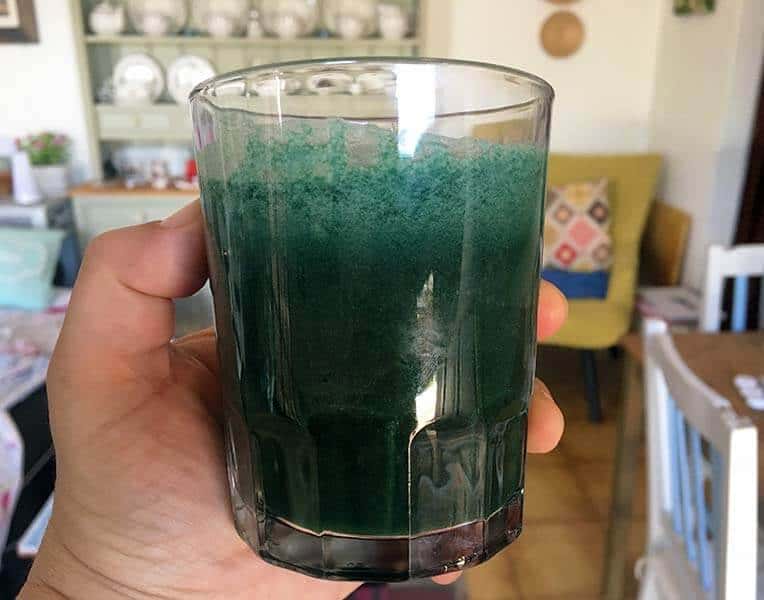
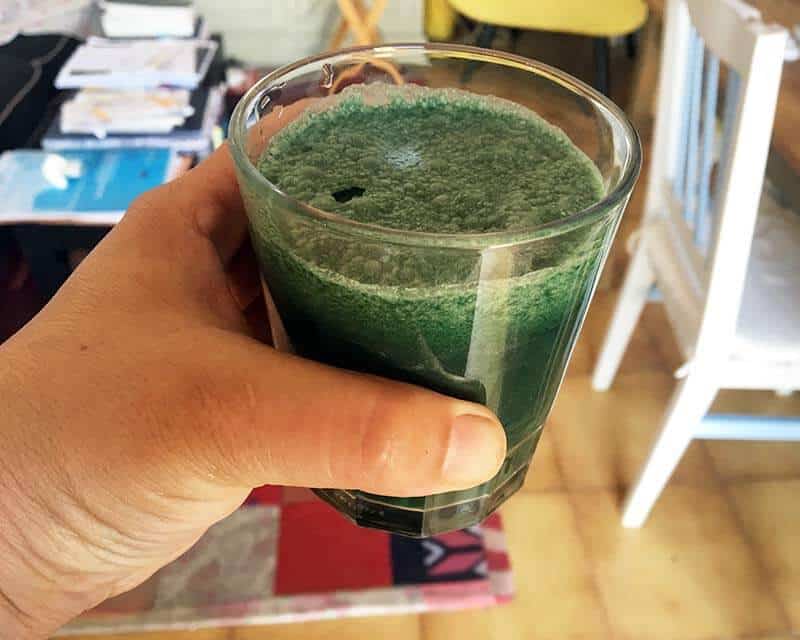
But, to finish it off, I’d like to list spirulina’s entire nutritional value on this post so I can come back and check/use it as reference:
Spirulina Nutritional Value (Dry Spirulina)
*Taken from Wikipedia which took it from the National Nutrient Database for Standard Reference Legacy Release:
| Nutritional value per 100 g (3.5 oz) | |
|---|---|
| Energy | 1,213 kJ (290 kcal) |
| Carbohydrates | 23.9 g |
| Sugars | 3.1 g |
| Dietary fiber | 3.6 g |
| Fat | 7.72 g |
| Saturated | 2.65 g |
| Monounsaturated | 0.675 g |
| Polyunsaturated | 2.08 g |
| Protein | 57.47 g |
| Tryptophan | 0.929 g |
| Threonine | 2.97 g |
| Isoleucine | 3.209 g |
| Leucine | 4.947 g |
| Lysine | 3.025 g |
| Methionine | 1.149 g |
| Cystine | 0.662 g |
| Phenylalanine | 2.777 g |
| Tyrosine | 2.584 g |
| Valine | 3.512 g |
| Arginine | 4.147 g |
| Histidine | 1.085 g |
| Alanine | 4.515 g |
| Aspartic acid | 5.793 g |
| Glutamic acid | 8.386 g |
| Glycine | 3.099 g |
| Proline | 2.382 g |
| Serine | 2.998 g |
| Vitamins | Quantity%DV† |
| Vitamin A equiv.beta-Carotenelutein zeaxanthin | 4%29 μg3%342 μg0 μg |
| Thiamine (B1) | 207%2.38 mg |
| Riboflavin (B2) | 306%3.67 mg |
| Niacin (B3) | 85%12.82 mg |
| Pantothenic acid (B5) | 70%3.48 mg |
| Vitamin B6 | 28%0.364 mg |
| Folate (B9) | 24%94 μg |
| Vitamin B12 | 0%0 μg |
| Choline | 13%66 mg |
| Vitamin C | 12%10.1 mg |
| Vitamin D | 0%0 IU |
| Vitamin E | 33%5 mg |
| Vitamin K | 24%25.5 μg |
| Minerals | Quantity%DV† |
| Calcium | 12%120 mg |
| Iron | 219%28.5 mg |
| Magnesium | 55%195 mg |
| Manganese | 90%1.9 mg |
| Phosphorus | 17%118 mg |
| Potassium | 29%1363 mg |
| Sodium | 70%1048 mg |
| Zinc | 21%2 mg |
| Other constituents | Quantity |
| Water | 4.68 g |
*A Word of Caution*
During my research I encountered many different sources stating the dangers of taking spirulina. Here’s one, for example. Although people in the comments didn’t seem to agree with the information the video covered, it is good to watch and make up your own mind. They all seem to agree on the fact that you have to buy good quality, reputable spirulina.
Other Takeaways from My Spirulina Research
I’d like to mention other bits and pieces I found interesting, good for me to have here to keep as reference (I have a very bad memory!)
- Take spirulina in small amounts to make sure it’s safe
- The Japanese have been taking it for hundreds of years, so it can’t be harmlful somehow (maybe the lower quality ones? If so, how to tell??)
- It cured someones acid reflux and her/his patients too (from Youtube comments)
- Some people buy it to prevent cancer
- Spirulina should be used in small amounts because it’s high in phosphorous and protein which can lead to kidney failure
**If you’d like to know what it tastes like please check my other post spirulina powder taste : )
Safe/Reputable Spirulina Brands
The spirulina I take was bought at a health shop I trust. Still, I’ll research the brand a little deeper to make sure I’m getting the right spirulina for my daiy intake. It’s a brand I get here in Spain, but I’ll list below the brands I WOULD BUY MYSELF if I was living in the US.
Nutrex-Hawaii Spirulina
A very popular brand of Spirulina powder, known for producing high-quality Spirulina powder that tastes better than other brands because the spirulina grows under natural sunlight.
[amazon box=”B0039ITKR4″]
Earthrise Spirulina
This spirulina grows under a controlled environment – no herbicides or pesticides. No added chemicals is a must and this brand seems to deliver. See what you think.
[amazon box=”B000R335BG”]
Helpful Resources
PubMed on Spirulina (lots of helpful articles)
